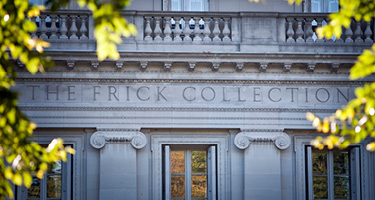Just recently, Marc Halliday of SL Green, a major New York landlord, stated at his shareholder’s meeting that “the hybrid work model has persisted for longer than I expected it to.” Office leasing is showing signs of activity, but office building valuations remain in flux as investors question lease renewals in the short term and the recent interest rate increase’s impact on prices. Between the rise of remote work and a surge in e-commerce, the overall trajectory of commercial markets poses both new opportunities and challenges.
Class A office buildings that are highly amenitized are seeing robust leasing activity, while older buildings remain a challenge. Recent reports show that 80% of all office workers are in the office at least three days a week. Employers seem prepared to accept such part-time office attendance but often want all employees together on those dates, translating into the same office space as the traditional model. The final result of the evolution of the post-pandemic office occupancy rates and their effect on lease renewals is not yet determined, and office investors seem to be on the sidelines waiting for further clarity. Retail remains an enigma—everyone wants their neighborhood to have great retail space—yet vacancies remain high. Retail rents have moderated, but perhaps not quite enough to encourage retailers to sign long-term leases.
The building code and political issues involved, however, are daunting."
Meanwhile, other parts of the commercial real estate market are active. The residential rental market remains strong, bolstering apartment building values and transactions. New York remains very popular with tech, finance, legal, media and other workers, particularly young workers. We are also seeing several decades-old residential property partnerships formed under pre-1986 tax changes using the high valuations to sell out to partners while absorbing the tax hit in order to simplify family holdings.
Commercial properties that are industrial were not as severely impacted by the pandemic and remained heavily utilized and will continue to grow amid the surge in e-commerce. And despite concerns about the overall economy, the life science sector will likely continue to grow and push up demand. Even tourism and hotel occupancies have rebounded, though they still remain below pre-pandemic levels.
Perhaps the most fascinating development in New York is the current political dance between regulations, politicians and the industry about re-positioning older properties, particularly office and outmoded hotels, to purely residential use to help with affordable housing and reinvigorate business districts. The building code and political issues involved, however, are daunting. Should light and air codes be relaxed? How much of the converted use should be set aside as affordable, and what level of affordability is appropriate?
The notoriously difficult re-zoning process in the city may be loosening up. The City Council has had an unwritten understanding that the local council person in each district would have a veto over any development in his or her district which involved any re-zoning or other discretionary Council action. Tortured negotiations often ensued over each project, and the local councilperson often said “no,” no matter what affordable housing or other concessions were made by the developer. After several high-profile developments with extensive affordable housing set-asides voted down, the political winds might be changing at least gently. A more pro-business mayor, together with a significant and growing housing shortage seems to be pushing the Council to be more realistic and less deferential. A large re-zoning in the Astoria neighborhood of Queens, famous for vociferously objecting to the Amazon’s possible arrival a few years ago, was recently approved albeit, with a highly affordable housing component.
Meanwhile, perhaps taking advantage of the more difficult financing markets for new construction projects, at least one not-for-profit affordable housing developer is seeing more availability in development sites. City, State and federal affordable housing financings have become more accessible since there is less of a “sign here now with a big non-refundable deposit” market.
Thomas D. Kearns is a partner in the Real Estate Law practice at Olshan Frome Wolosky LLP in New York, NY. With significant experience in both real estate and corporate law, Tom represents owners, operators and developers in the acquisition, development, ground leasing and financing of office, residential and retail properties. He has been selected by his peers for inclusion in The Best Lawyers in America® in the field of Real Estate Law since 2019.
Nina M. Roket is a nationally recognized commercial real estate lawyer at Olshan Frome Wolosky LLP in New York, NY, where she serves as co-managing partner, member of the Executive Committee, Co-Chair of the Real Estate Law Practice, Chair of the Leasing Practice, Chair of the Hiring Committee and Chair of the Women’s Committee. Her practice focuses on leasing, conveyancing and finance transactions and restructuring situations. Nina has been selected by her peers for inclusion in The Best Lawyers in America® since 2021 in the field of Real Estate Law.
































